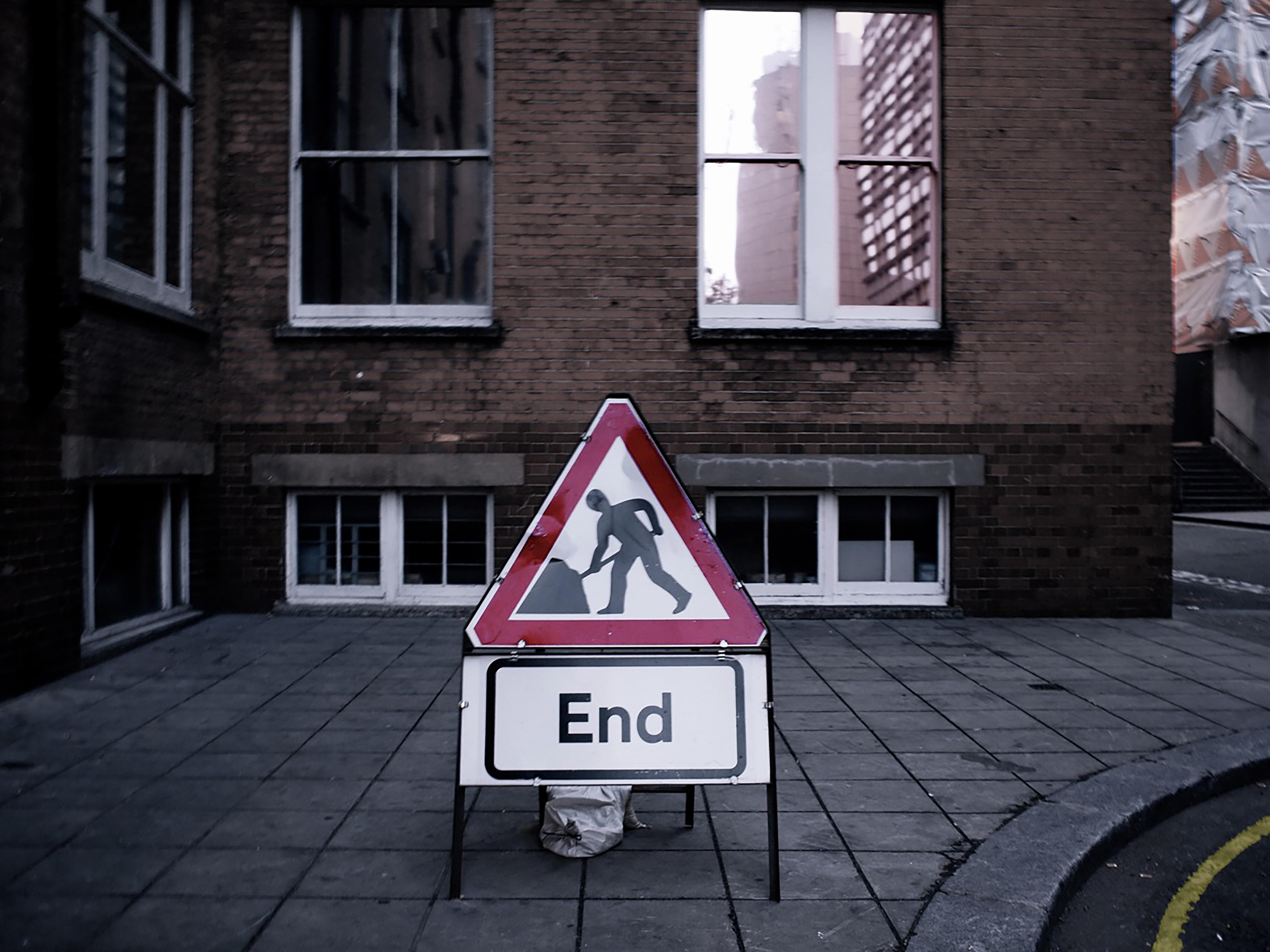Society Driven Design
co-creating brighter futures - a practitioners handbook

For Xavier, Caspian & Tallulah forever in beautiful conversations - spanning across space, time and love - in the world that lives within, and the next

co-creating brighter futures - a practitioners handbook

For Xavier, Caspian & Tallulah forever in beautiful conversations - spanning across space, time and love - in the world that lives within, and the next
In 1971, at the height of the Vietnam War and at a time of great political and social instability, Dutch philosopher Fons Elders invited Noam Chomsky and Michel Foucault to take part in a televised debate. The debate took place at Eindhoven University of Technology in the Netherlands and focused on the theme of human nature. Two of the twentieth century’s most influential public intellectuals, sharing their thoughts on hidden power and the legalities of better justice. Throughout the discussion, Chomsky reiterated a high regard for the structures, rules and principles found in language.
“An adult, speaker, who has somehow acquired an amazing range of abilities, which enable him in particular to say what he means, to understand what people say to him, to do this in a fashion that I think is proper to call highly creative1.”
To communicate with another person is to engage in a highly creative process.
For the designer to facilitate change they must be willing to embark on their own transformational journey. Travelling to the places where design rarely goes, the edges of our society, in order to host conversations across space, time and culture.
Life is messy. Society is complex. Phenomena is non-linear. Poverty is about more than just money. We cannot design ‘think’ our way out of these challenges.
The use of applied design in tackling social inequalities has become more popular in recent years. In some quarters this growth has preceded the commodification of the design process, and as such, design is more vulnerable to over functionalism. The growing silhouette of the design toolkit is in danger of eclipsing the craft of design itself.
Noam
https://chomsky.info/1971xxxx/
Chomsky debates with Michel Foucault 1971The over dependency on design tools disables my ability to reason with humanity as a designer. I do not mean to diminish the value of design tools, I am simply seeking a different way to share my practice. To that end, this is not an academic book that seeks to engage your mind, but a practitioner’s declaration written for the heart.
This is a book about society driving its own change. Change that is facilitated by the soulful designer through meaningful conversations.
Conversations that will take the designer on an interior journey, one that leads to themselves, their practice and their own definition of design. Travelling to the margins of our communities and the depths of ourselves - in doing so the designer will become fluent in the language of hope and loss.
Society driven design brings all the components of a collaborative conversation together like an exploded drawing. Conversations that will foster long term collaborations. Collaborations that will continue beyond the projects that we will make together - the art of the Social License.
I will be exploring three areas that significantly contribute to the practice of socially driven design throughout the book. The role of the designer. The art of conversations. The value of the Social License.
As an example of the society driven design process, I will be sharing the extraordinary story of InHouse Records. The worlds first functioning record label to have been co-created in a UK prison which has led to incredibly low recidivism rates.
I sincerely hope this practitioners handbook will become a meaningful addition to your library and your heartfelt practice.
The designer. The conversation. The Social License.


Editor: Tallulah Mae Armani
Cover Art: Hannah Lee
The Guild - Neil Sartorio, Justin W. Cook, Nick De Leon and Atsushi Hasagawa
Grace, Carl and ALL at InHouse Records - keep it 101 - binary.
Daisy, Bex, Abbie, Lance, Andy D, Sara P for making this happen!
Sarah Lockhart and my Epic UK family - Changing the game.
Captain Phil Nugent, Rafäl, Nico, Roman and Antonio - One of these, one of these and a yoghurt.
Jim Chancellor, the prince of the music industry.
Richard, John, Carolyn, Nicolas and Qian - my RCA family.
Professor Clive Grinyer - Football Love, Jazz Clubs and world changing.
Kelly Jones - conversations across space, time and culture - with pasta.
Joel Pott - the king of invisible sacrifices.
Ben Drew - for the inspirational sacrifice of Each One Teach One.
Jamie Lenman - you are a master craftsman and a true gentleman.
Makepeace - Forza Fora!! (you too Cala) - friendship and change.
Mary V. Mullin and all at the Sir Misha Black Awards.
Thomas Horton - Grand Avenues is society driven design.
Naomi, Matt, Paul and all at Catch22 - The original Trequartistas - changing from within.
Toban Shadlyn - practice building, hope forming conversations.
Rob & Emily at Ecological Citizens - greener conversations!

Hannah Steiner and all at EY - your energy, kindness and support.
Cormac Russell - The champion of ABCD and connected communities.
The Sherer’s, the Annis’, the Campbell’s and Steely - From Brighton with love - thank you for journeying through the good, the tough and the beautiful.
Andrew Marshall - Carlowrie and Astell.
Llulah Mae, words fail me, but thankfully not you - you are a genius.
Harm, Soraya and Peter at BiS for your faith, compassion and patience.
SP for teaching me to see the person, not the prison.
We had to do a mad ‘ting.
We changed the game, we changed the pattern.
Thats why I gotta thank him.

co-creating brighter futures - a practitioners handbook
Hoda Judah Armani Edited by Tallulah Mae Armani BiS PublishersConversation | ˌkɒnvə ˈ seɪʃn | noun
a talk, especially an informal one, between two or more people, in which news and ideas are exchanged.
ORIGIN
Middle English (in the sense ‘living among, familiarity, intimacy’): via Old French from Latin conversatio(n-), from the Latin verb conversari ‘keep company (with’), from con- ‘with’ + versare, frequentative of vertere ‘to turn’. The current sense of the verb dates from the early 17th century.


Things end.
Perhaps this is the hardest phenomena we all wrestle with. From the trivial to the profound, all things end.
Generally, we tend not to talk about endings, perhaps this is because we do not feel adequately equipped to cope with the sadness that encompasses finite conclusions, or maybe it’s that endings draw us to the edges of our vocabulary, where our language lexicon becomes raw, unable to express the depth of our emotions - tongue tied. We become lost for words.
On the other hand however, we are able to speak with emotional fluency about beginnings. ‘New’ is attractive, ‘new’ provides hope, possibilities, it is endless. In fact, the abundance of ‘new’ means we do not need to think too much, if at all, about ‘endings’.
Upgrade. Improve. Modernise. Customise.
Fluent in the language of ‘new’, yet largely illiterate in the language of loss. Perhaps we find ourselves so unbalanced because it’s harder to sell ‘endings’ as successfully as we do ‘beginnings’? Maybe we are unable to fully comprehend the language of beginnings unless we truly know the language of endings? What if, in pursuit of building better beginnings, we need to learn how to build better endings?
From the trivial to the profound, all things end.
However, the ending of something, isn’t necessarily the ending of everything; the end of a marriage isn’t the end of love and the end of a journey, isn’t the end of adventure.
Before we can be confident in designing new things, we need to master the craft of designing endings and designing them well. Over the last twenty years my design practice has led me to collaborate with people caught in some of the most challenging circumstances imaginable, and
successfully speaking about endings was often the catalyst to imagine new beginnings. If we desire change, we must collaborate; oppression can only be eliminated with the participation of the oppressed. Poverty can only be eradicated with the collaboration of the poor. In order to collaborate we must be able to see preferred futures together and to realise this, we must learn the language of loss and speak well of endings.
Therefore, society driven design can only truly begin when we design meaningful conversations about endings. Before we design anything, we must design conversations.
Designing better conversations about endings and beginnings is unavailing if we are not collaborating. Collaboration is transition; for any ending to progress toward successful beginnings there must be a transition. I have learnt - often the hard way - that homelessness is not just about the homeless, nor is prison just about the prisoner. We all have a stake in our society and thus, for society to drive design meaningfully, we must design better transitions and thus, better ways for all to engage.
The world is run by those who show up and I invite you all to show up.
I am minded to paraphrase John Ruskin’s 1872 Law of Help : “The 2 collaboration of all things across everywhere in order to sustain life.” Ruskin saw in nature the essential alliances that need to be created by all, in order to sustain life. He argued that such a law should be applied to human development, indeed alliances must be sought by everyone, across everywhere, in order to sustain life. All life is transitioning.
Establishing alliances require us to find effective ways of engaging with wide and diverse neighbourhoods. Before we can design anything, we are designing conversations - conversations about endings and conversations about transitions.
John Ruskin, Modern Painters, Volume 5, 1860 John Wiley and SonsThe social designer must become skilled at designing conversations, in order to reach all and, to speak of endings that lead to collaborations, transitions and virtuous beginnings.
This is a book about social change driven by a new kind of collaboration. As such, I seek to frame the role of design and the practice of the designer, as an internal journey as well as an external process.
I will share principles and conditions for making conversations that facilitate transitions through engagement, clearly communicate endings and as a result, foster better beginnings. Indeed it has been my privilege to have shared beautiful conversations about endings and effective transitions through collaboration with many communities who have designed their own beginnings. In the process of pursuing my practice, I have created my own circular zig-zag vocational pathway of social transformation - endings, transitions, beginnings and transitions once more.
Perhaps with hindsight, it would have been easier if I were to chart a more direct route for my practice - avoiding the serpentine heartachebut that would have come at the expense of foregoing failure, which, not only seems impossible to me, is also undesirable. The absence of failure would effectively rob me of the rocket fuel needed for transformation; both personally and societally. Indeed experiencing endings and talking about them honestly, can help us all transition to designing better beginnings.
Certainly in my own life, I can testify to the difficulty of attempting to pursue societal change without being open to personal change. Let me be clear, it doesn’t work. It’s impossible to live in one world, whilst trying to breathe in another. Many have tried, none to my knowledge have succeeded.


From the trivial to the profound, all things end.
In Shakespeare’s Hamlet, Polonius cautions his son, Laertes, to be honest with himself: “This above all, to thine own self be true.3”
Before we design anything, we must design honest conversations with ourselves - transitional dialogue. The designer seeking social change, must desire change in their own lives. Personal change facilitates growth, which in turn often signifies the ending of unwanted things in our life.
All things end. This is a good thing, for bad things. From injustice to poverty, these too, will end. Design, I have found, has a significant role in helping unwanted things to end quicker.
Impact in society happens best when society drives it and for that to happen, collaboration becomes essential. However, diverse collaborations and meaningful endings, need effective dialogue to inspire and empower a society to design change. For society to drive positive change, we must learn to design endings through conversations where all can contribute. Without designing endings, we are unable to collaborate effectively and thus transitioning becomes problematic, rendering our beginnings as suboptimal.
We all have a role to play and we can all make a difference to this world.
In fact, a significant motivation for writing this book has been the sheer number of people over the last twenty years, who have asked me for advice regarding how they can make a difference to our society.
From meeting people who are serving prison sentences to folk living in absolute poverty, I have learnt, all people want to make a difference. People in the midst of their own unresolved and incredibly challenging circumstances, choose to see the wellbeing of others as an important part of their own lives. How can that not reinforce anyone’s hope in humanity? Of course I have met many who are not in challenging
circumstances but still their empathy moves them to compassion as they too ask the same question of themselves, how can they make a difference in the world.
By doing what we all do everyday, just better, we are all able to participate in creating better conversations; better conversations that lead to a better understanding of ourselves and of each other. Better conversations that can further collaborations across neighbourhoods and communities in order to establish society driven design. In the spirit of Ruskin; we should be designing conversations that advance alliances in support of sustaining all life. Herbert Simon once said: “Everyone designs who devises courses of action aimed at changing existing situations into preferred ones. ” We all have the capacity to 4 change things for the better, no matter how big or small, therefore the designer in us all must be freed.
The first movement of this book begins with an ending, exploring the internal journey for the designer. In socially driven design, the internal journey bears a critical influence on the outcome of the process, therefore we will be exploring this journey through three lenses. How we define design, our relationship to design and how this forms and informs our fluency in the language of loss and endings. I will be making a case for the work of society driven design to be viewed as a craft and thus, the role of the designer as a craftsman - one that can speak the language of endings through the craft of design.
The second movement entitled transitions is an external practice of understanding. I will be sharing how the majority of my time in the design process is spent in transitions and the importance of understanding over knowledge throughout the journey. This movement possesses three overarching themes: how to make sense of phenomena, how to make sense of conversations and the application of both within the Social License, a new approach to the art of collaboration. I will focus on how we can make the space for a different kind of collaboration - no longer about transitioning, but about making - the kind of space that champions change.
Herbert Simon, The Sciences of the Artificial, 1970, MIT PressI will be sharing a pathway for collaboration to transcend a ‘means to an end approach’ by making the collaboration itself the destination. In this way the value of the Social License becomes far greater than any initiative it may birth. We will examine organisational structures for collaboration and explore with greater detail how we may embark upon hosting multiple Social Licenses. Licenses that represent communities within pre-determined systems and those who fall outside of any recognised system. I will also be sharing stories of socially driven initiatives spanning across my two decade practice within the phenomena of homelessness and the criminal justice system.
The third movement entitled, beginnings, features the story of InHouse Records, the groundbreaking work of a multi-award winning innovative education programme. I will be sharing the remarkable story of how an eduction programme became a programme for change, an utterly unique approach to learning, that is evidencing extraordinary outcomes. This third movement of the book covers four sections: understanding and insights, theories and assumptions, factors of change and designing meaning and measure. The sections have been carefully curated in order to profile the thinking and conversations that took place across the whole process.
The final movement is entitled, transitioning, in which I will summarise all the themes we have discussed throughout the book. Beginning with the end, a reminder of the interior journey we all need to embark upon if we are to navigate the exterior journey of design application. I will also share the first steps in building your own Social License.
Whilst this book has been written with service design students and practitioners in mind, as this is the iteration of design I lecture and practice in, I do hope the broader design world, and change makers may also find value across all four movements. It is my aspiration that this book may find a wider appeal with social entrepreneurs, third sector agencies fighting to innovate, and those working within local authorities, keen to strengthen the relationship with their local citizens.